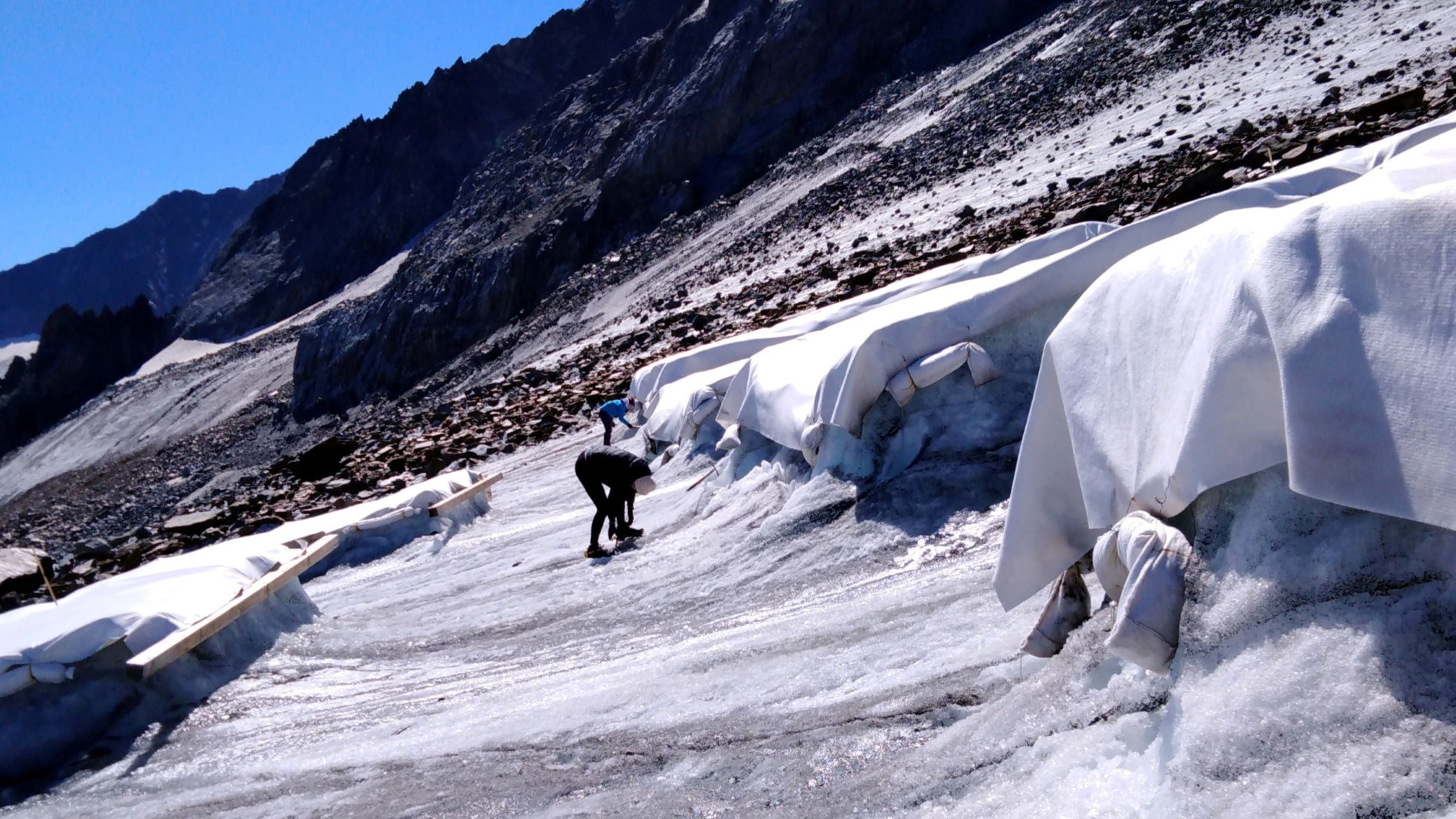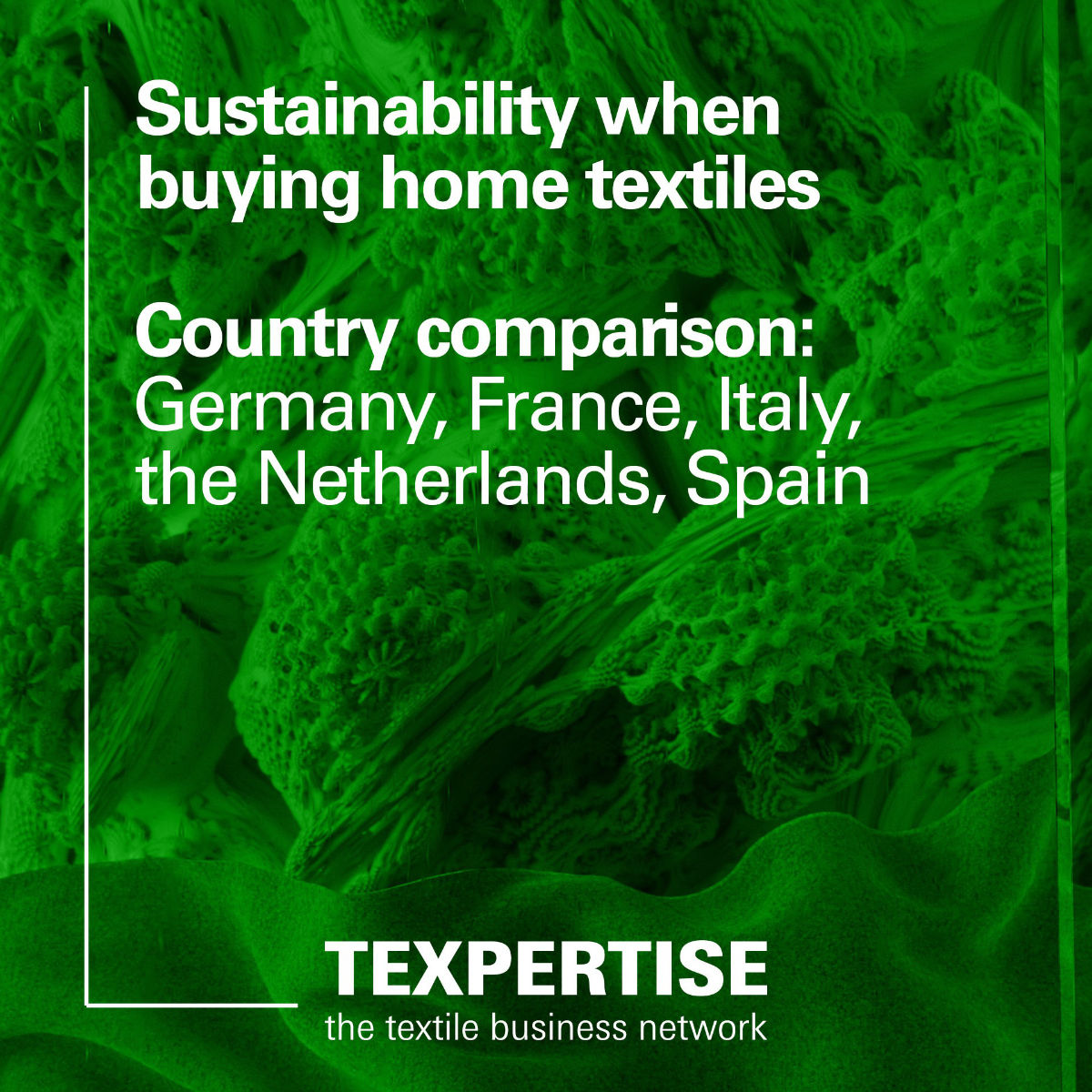When we reached Birgit Sattler on a video call, she was stuck in a hotel in Cape Town. “Unfortunately, we have not been cleared for take-off”, she said. If everything had gone to plan, the microbiologist from the Department of Ecology at the University of Innsbruck would have been on board the aircraft on her way to Lake Untersee, one of the largest freshwater lakes in Antarctica, some 4,500 kilometres to the south of Cape Town. During the two months she is scheduled to spend there, she wants to search for evidence of human influences in the ice, e.g., pesticides, antibiotic resistant bacteria or microplastics. However, her aeroplane cannot land there because the weather is currently so bad. “After all, we don’t want to skid off the ice floe”, joked Sattler.
This delay did mean, however, that she has some time to speak with us about a subject that accounts for a large proportion of her research activities: glaciers. Sattler has been travelling the polar and alpine regions of the world for over 30 years to research into the sensitive ecological systems surrounding glaciers, including the effects of the climate emergency. And these effects have been dramatic.
Half of all glaciers could disappear by 2100
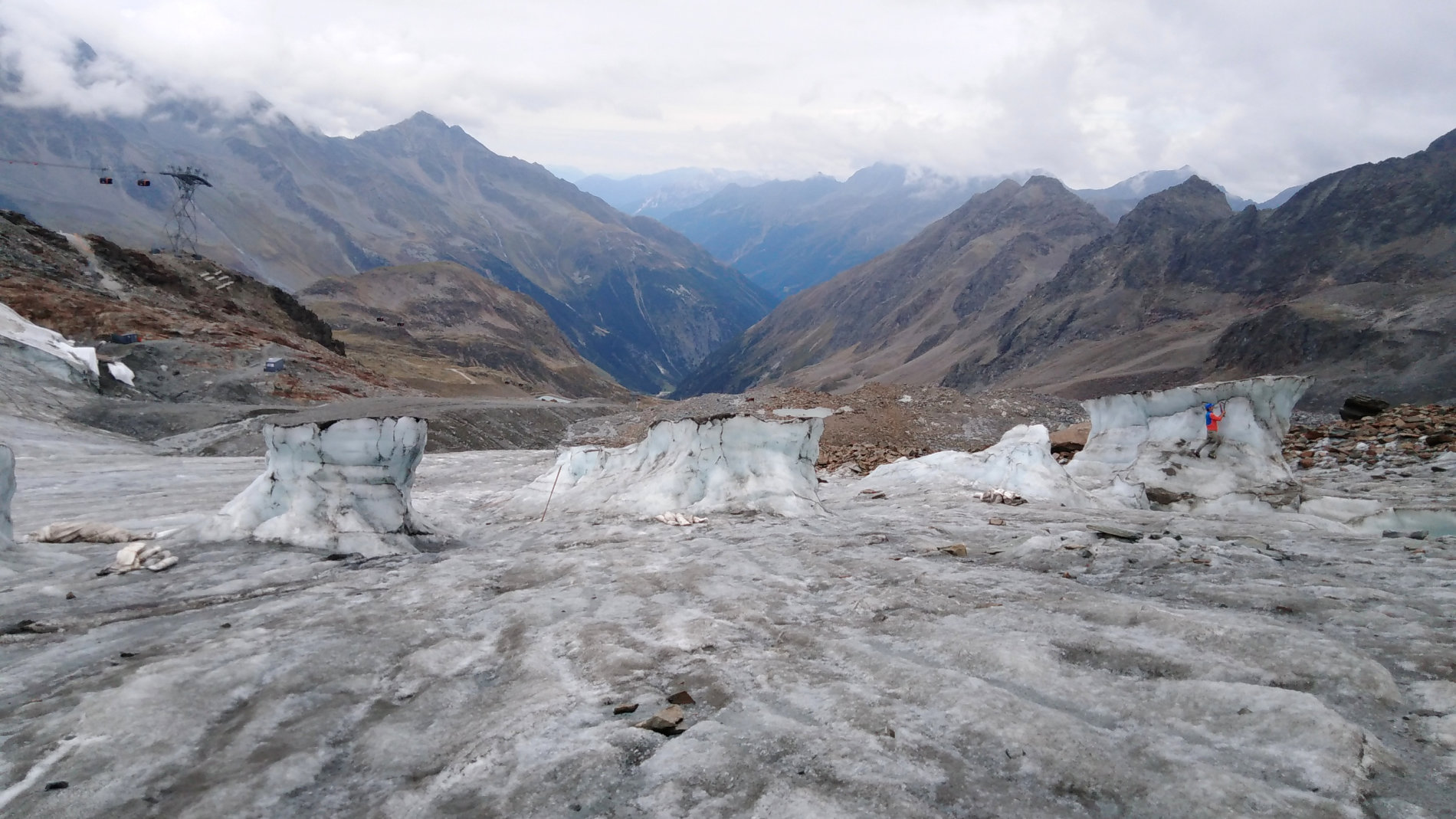
According to a study published in ‘Science’ in 2023, almost half of the world’s 215,000 glaciers could melt by 2100. Given an estimated glacier surface area of 700,000 square kilometres, this means – if temperatures keep rising at the present rate – glaciers covering an area the size of all Germany (357,592 square kilometres) could have disappeared by the end of the century. “The consequences of this would be felt around the globe”, said Birgit Sattler.
Berndt Koell was also on our video call. He works for Lenzing AG, one of the world’s leading manufacturers of cellulose fibres made from wood. Lenzing’s biodegradable fibres are to be found in a wide variety of products, such as clothing, duvets, furniture fabrics and hygiene articles, and represent an alternative to petroleum-based fibres, such as polyester. Koell works in the ‘Emerging Business’ division and is constantly on the lookout for new applications for his company’s wood-based fibres.
Koell remembers being shocked when, in 2021, he came across an article about the dramatic situation of the Alpine glaciers in a mountaineering magazine. “I come from Tyrol and grew up in the shadow of the mountains. However, I had no idea that the Alpine glaciers are melting so quickly.” The author of the article was Birgit Sattler whom Koell promptly called to ask whether this could be something for Lenzing’s cellulose fibres, in the form of a geotextile used to cover the glacier and prevent it from melting.
Another problem for the Alpine glaciers: microplastics
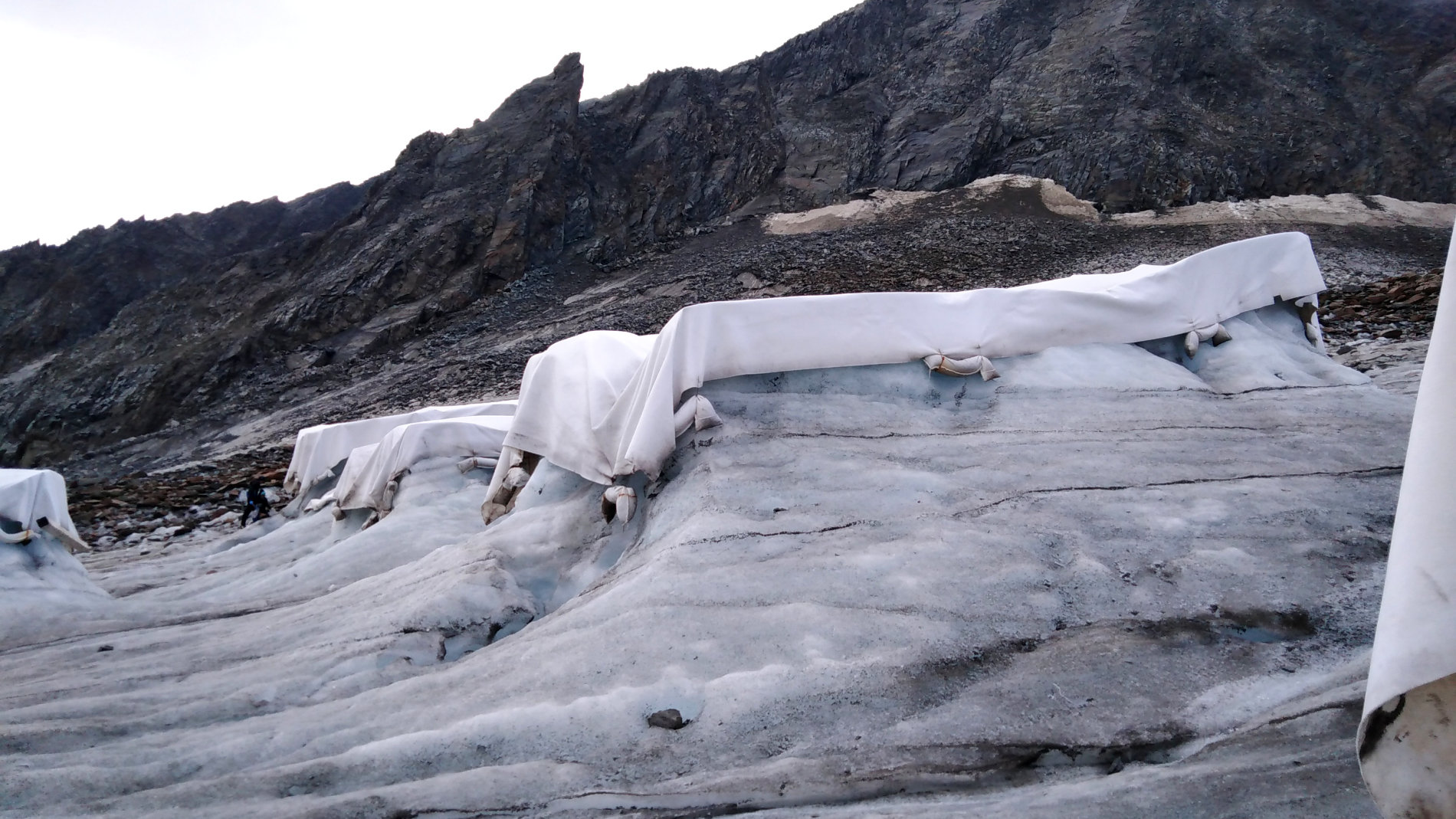
Important to know in this connection: the idea of covering Alpine glaciers with geotextiles is not new. “During the summer, many of glacier ski resorts in Austria, Italy, Norway and Switzerland cover ice and snow fields with carpets of white geotextiles to prevent or at least slow the rate at which they melt”, explained Koell. In many cases, the geotextiles used are woven fabrics or nonwovens made of synthetic fibres, such as polypropylene.
Geotextiles of this kind are mainly used in building, railway and road construction, for example, to reinforce instable ground and, above all, for their water-repellent qualities. According to Koell, these qualities are important because, for instance, a geotextile laid under a road to stabilise it should not dissolve on contact with water. “Thus, for safety reasons, durability is often the top priority when it comes to geotextiles”, says Koell.
However, as microbiologist Sattler explained, covering a glacier with a geotextile made of synthetic fibres can have an undesirable secondary effect: “We found microplastics around an Alpine glacier where it had been covered by geotextiles”. As she says, this is because textiles used to cover glaciers are subject to harsh weather conditions and wind and rain can cause fibres to break away from the fabric.
She and her team even found traces of these fibres in the valley below the glacier. Obviously, they had been carried there by the meltwater flowing in streams down from the glacier. “This shows that classic geotextiles are incompatible with sensitive high-mountain systems”, says Sattler. She adds that, once in the water cycle, the particles could possibly also get into the human food chain.
Biodegradable geotextile vs. classic geotextile
Paradoxically, although the methods of protecting ice and snow with geotextiles are effective, Sattler’s research shows that microplastics from the textiles can enter the sensitive ecosystems around the glaciers. In view of this, Sattler and Koell asked themselves whether it would be possible to protect glaciers in an environmentally friendly way.
Together, they came up with the idea of making a biodegradable nonwoven geotextile from Lenzing’s cellulose fibres, which would protect the glacier without releasing microplastics. To this end, they reached agreement with other companies, including Naue, a leading international manufacturer of building materials, which produced four-metre wide rolls of nonwoven fabric using Lenzing’s cellulose fibres.
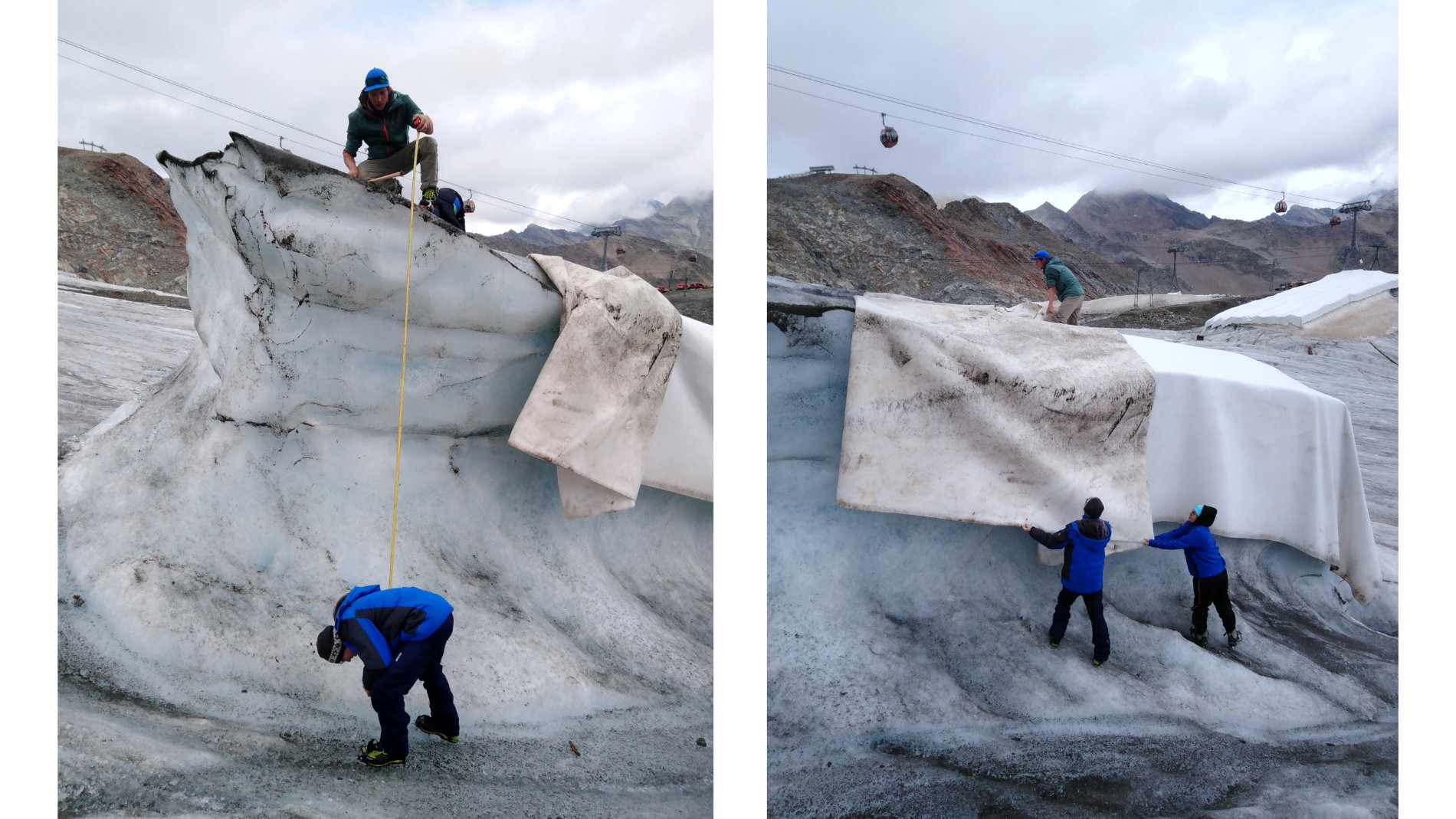
"We could hardly believe our eyes"
The first field trial began in the summer of 2022 when the glacier researcher and the textile expert covered selected areas of ice on the Stubai Glacier in Austria with the new bio textile. Throughout the summer, they observed the way the ice melted. “We could hardly believe our eyes at the end of the trial”, said Sattler. Why? Because while the ice around the test area had melted almost completely, there was still around four metres of ice under the new nonwoven geotextile. For Sattler, this represents, “A revolution for protecting glaciers with textiles”, because the trial demonstrated that the insulation qualities of the biodegradable nonwoven fabric are at least as good as those of a classic geotextile.
“Our collaboration with textile companies such as Lenzing is a game changer for us”, said Sattler at the end of our call. As a researcher, she can document the impact of the climate emergency on glaciers. However, partners are essential when it comes to developing innovative textiles to prevent or slow down their melting. As she puts it: “We are scientists, not materials developers.” Indeed, she thought the whole thing was a niche subject even when the field trial was beginning. “In the meantime, however, I have the feeling that we can really change things using sustainable geotextiles.”
Photos: Birgit Sattler/Uni Innsbruck
